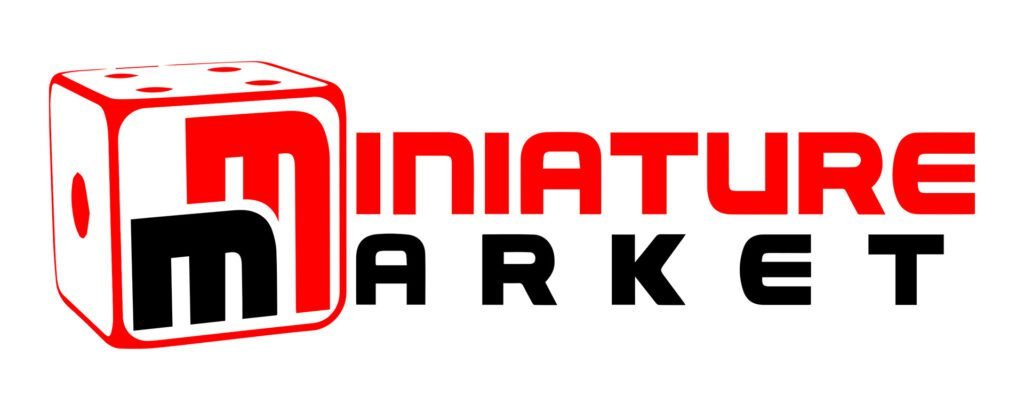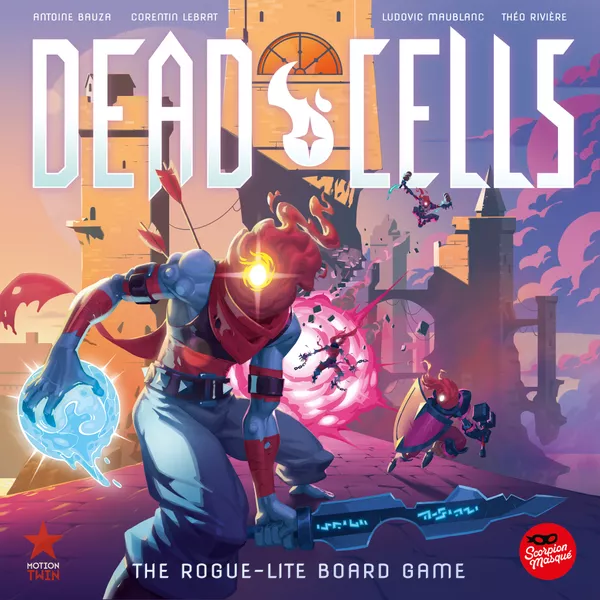
Today we’re diving into Dead Cells: The Rogue-Lite Board Game. This is a board game adaptation of the critically acclaimed video game Dead Cells, brought to life with a lot of the same challenging, addictive gameplay fans know and love. So, let’s break it down – what it is, what’s good, what’s bad, and if you should pick it up. Let’s get into it.
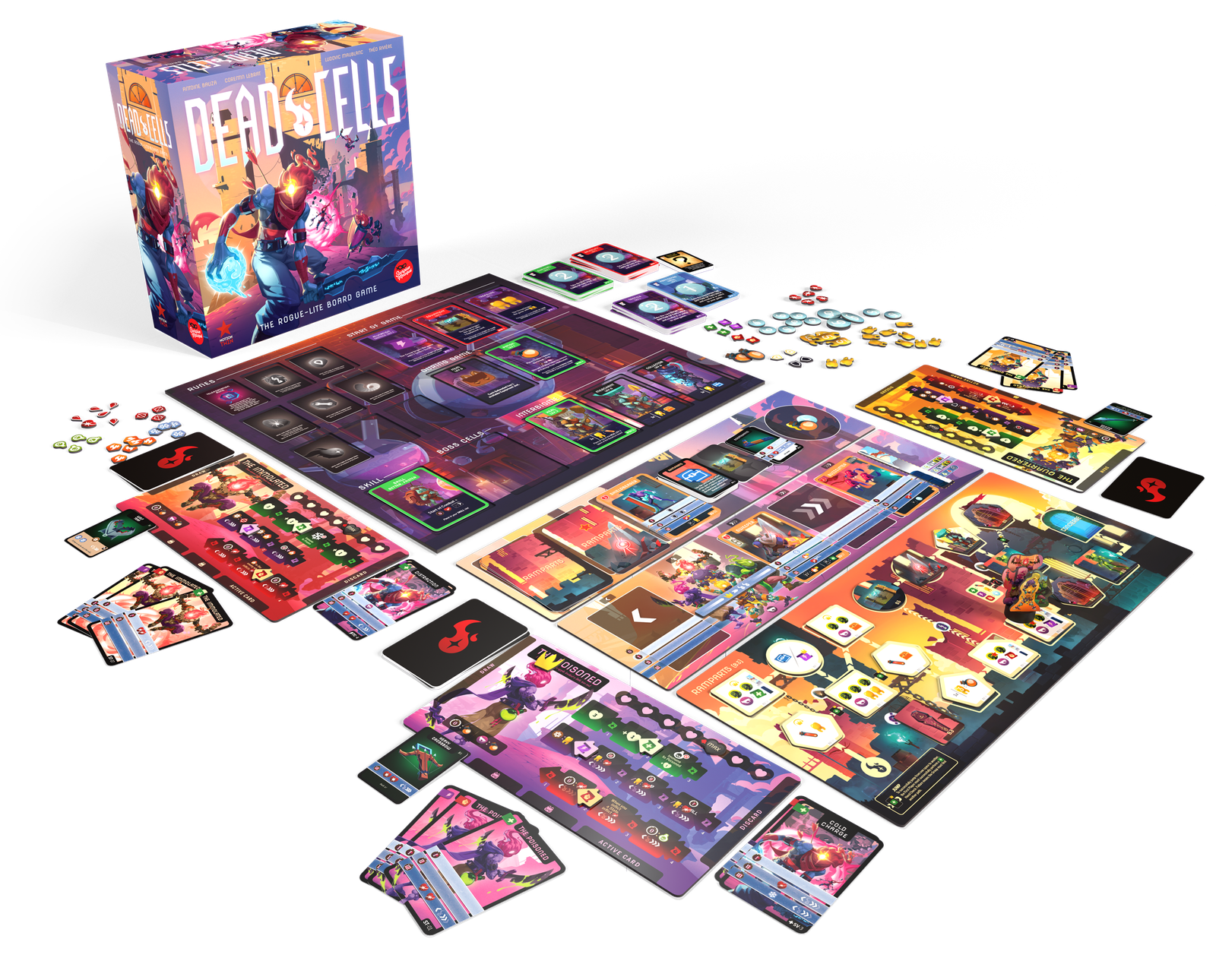
What It Is
Dead Cells: The Rogue-Lite Board Game is a cooperative tabletop game that captures the essence of the original roguelike video game. Designed for 1-4 players, the game takes around 45 minutes per session and plays best with three players. Each player takes on the role of a “Beheaded” character, diving into randomly generated biomes to explore, fight enemies, and unlock new abilities, all while working together to overcome challenges. The board game keeps the roguelike mechanics, making every playthrough feel fresh and unpredictable.
Check Out These Recent Board Game Sales
- Board Game Sale: Disney Villainous 25% Off!
- Board Game Sale: Marvel: Crisis Protocol Core Set 30% Off!
- Board Game Sale: 7 Wonders Available for 17% Off!
Gameplay Overview
In Dead Cells: The Roguelite Board Game by Scorpion Masqué, players engage in an intense, dungeon-crawling, co-op adventure where they slash through a series of biomes in an effort to survive. The game requires teamwork and strategic planning to overcome increasingly difficult encounters. Players collect loot, gold, and cells, which can be spent to upgrade abilities. If a character dies, the run ends, but players retain their cells to level up, adding a layer of progression that influences future attempts.
To begin, players choose from a set of unique characters, each with specialized stats and an array of abilities divided into three types: survival, tactics, and brutality. Each character’s board provides spaces for health points, equipment cards, and tracks for power boosts. Characters also start with a set of combat cards, shuffled and drawn to form a hand of three, from which they draw each round. With health starting low and limited equipment, players must strategize to enhance their abilities as they progress through the biomes.
Setup includes arranging the mutation board, combat board, and various token piles for health, shields, and cells. The mutation board serves as the primary upgrade and progression area, where players store enhancements and resources between runs. Game tokens and treasure cards are placed on a designated board, and a miniature or token is set at the starting point of the biome board, indicating the group’s location.
The main objective is to survive and explore each biome tile by tile, defeating enemies and collecting loot along the way. Gameplay unfolds through a sequence of runs, each consisting of three main steps: moving the group marker, flipping tiles, and resolving encounters. Each new tile reveals a potential challenge or reward, like treasure, upgrades, or merchant services. Players may encounter regular or elite monsters, which kick off combat rounds, or runes that open blocked paths, adding layers of strategy as the group advances.
When combat occurs, players take turns assigning actions from their hand, using different abilities to deal damage, heal, or apply special effects. Combat rounds are marked by three phases on the combat board, where players select which cards to play based on range and effectiveness. Monsters have unique abilities as well and may inflict states like poison or bleeding. Players must coordinate attacks to bring down enemies within the three-round limit, as unchallenged monsters will continue dealing damage.
Loot and rewards from combat go into a shared bag, which players divide at the end of each encounter. However, unclaimed items are discarded, so timely collection is key. Characters can also unlock abilities and equipment, adding power-ups and extra moves. If a character reaches zero health, they die, ending the run but retaining their cells, which players can use to upgrade on their next attempt. Equipment cards provide extra actions or enhancements, but inventory space is limited, forcing players to make tactical choices.
Even when a run ends, progression isn’t lost. Cells and certain enhancements can be used on the mutation board to unlock permanent mutations, upgrade combat cards, and activate abilities that carry over across sessions. The mutation board acts as a checkpoint, preserving items and skills so that each run begins a bit stronger, letting players edge closer to completing the game.
Dead Cells: The Roguelite Board Game brings together strategy, teamwork, and gradual progression to create a roguelite experience that rewards players for perseverance. With each run, the team builds on past experiences, preparing to face new challenges, unlock secrets, and discover how far they can go in the treacherous dungeons.
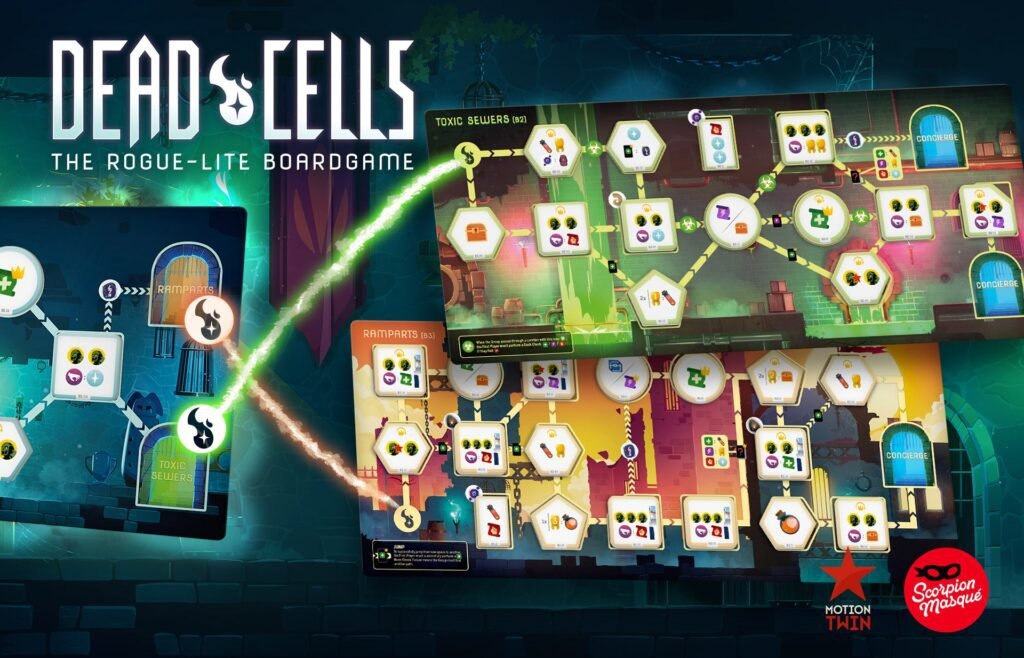
The Components
The components of Dead Cells: The Rogue-Lite Board Game are impressive, with detailed miniatures, vibrant artwork, and a range of cards and tiles that capture the distinctive look of the video game. The aesthetic is true to the original, with each biome and character reflecting Dead Cells’ gritty yet colorful art style. For fans of the video game, this attention to detail brings an extra layer of immersion. From the unique miniatures to the beautiful, moody tiles, the game’s physical presentation helps to make the Dead Cells universe come alive on the table.
The Good
The game is very true to its source material, which will please Dead Cells fans. Its roguelike elements are well-translated into tabletop form, especially the progression system. As players gather cells and spend them between runs, there’s a strong incentive to keep playing to see what new equipment or abilities you can unlock. This element adds replay value and creates an addictive “just one more run” feeling that makes Dead Cells so engaging. The cooperative gameplay is also balanced, avoiding the quarterbacking issue that often plagues team-based games; players have to communicate in general terms about their strategies without revealing too much, which keeps teamwork fresh and exciting.
Replayability is a big strength here. With various biomes, characters, and equipment to unlock, Dead Cells offers players a lot to come back for. Each run is different, thanks to the semi-randomized biomes and unique enemy encounters that bring variety to every session. The way you can combine different abilities and equipment to create new strategies ensures that no two games feel alike. This variety means the game has staying power, and players who enjoy it will likely keep coming back to try new combinations and see how far they can go.
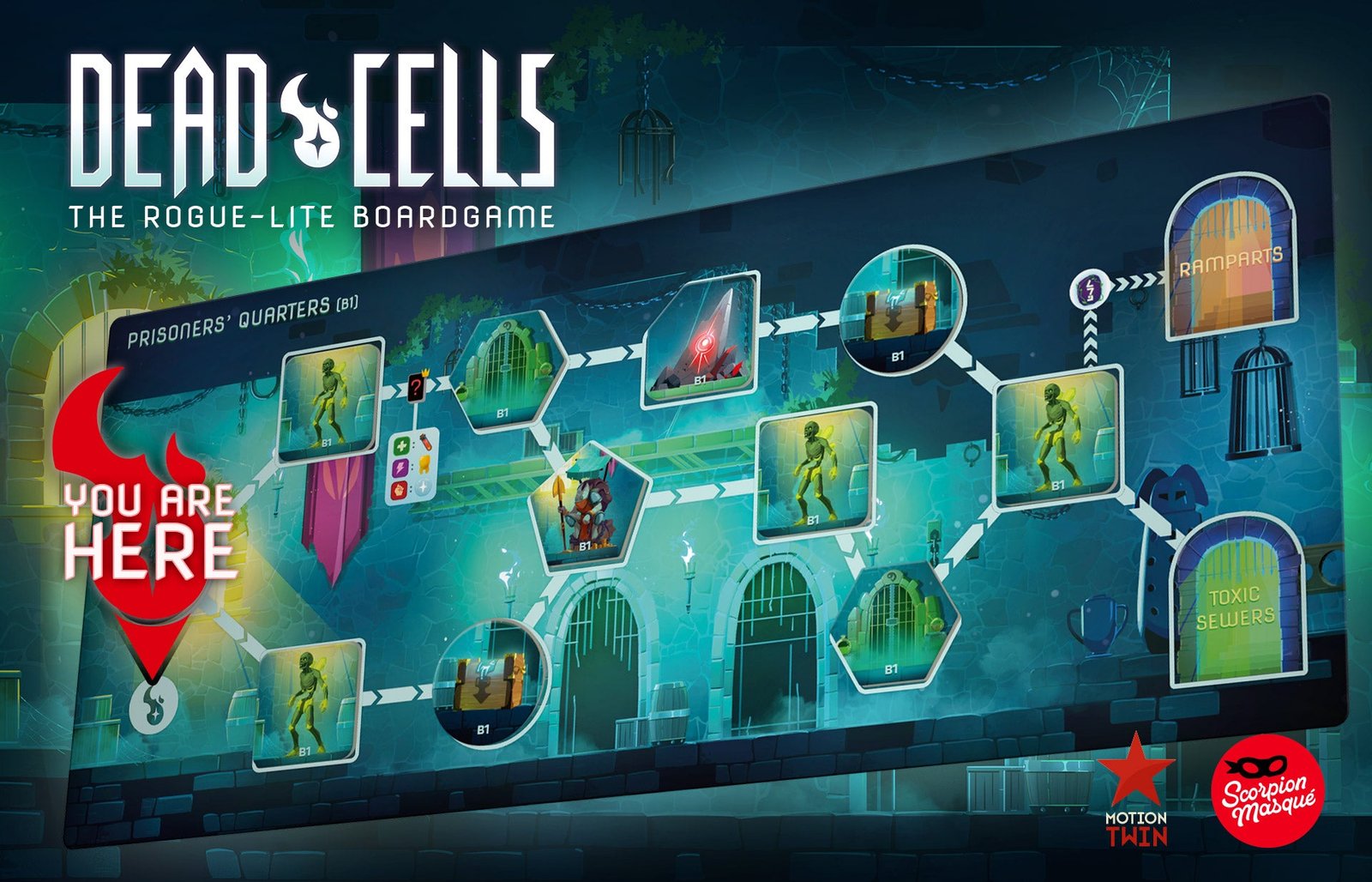
The Bad
That said, the game has a few issues, starting with the rulebook. Some of the rules around player communication in combat are a little unclear, leading to some confusion among new players. This lack of precision in the rules can sometimes lead to inconsistent play experiences, with different groups interpreting certain mechanics in different ways. The game could benefit from clearer instructions, especially since it’s built around careful communication and tactical coordination between players.
Another drawback is how the game handles its player count. While it technically supports 1-4 players, the best experience is found with three. In four-player games, one person will sit out each combat round, which can lead to players feeling left out at times. Additionally, randomness can sometimes frustrate players, especially when the game deals particularly challenging enemy combinations that are hard to counter with certain hands. This can create sudden, unsatisfying defeats, which, while true to roguelike design, may be off-putting for some players who feel powerless to impact the outcome.
The Verdict
So, should you buy Dead Cells: The Rogue-Lite Board Game? If you’re a fan of the original Dead Cells game, this board game is a well-made adaptation that delivers a lot of the same thrills, challenges, and progression that made the video game so popular. It’s a great choice for anyone who loves cooperative games, tactical combat, and replayable experiences. The gameplay is challenging but rewarding, and the cooperative mechanics allow for meaningful teamwork without letting one player dominate the game.
For board game fans unfamiliar with Dead Cells, this is still a solid pick if you enjoy roguelike elements and strategic planning. However, if you’re not into roguelikes, the randomness and occasional quick defeats might be frustrating. It’s a game that rewards persistence and creativity in problem-solving, so if that sounds appealing, Dead Cells will probably be a hit. Otherwise, the game’s minor flaws, like unclear rules and the player count issue, might detract a bit from the experience.
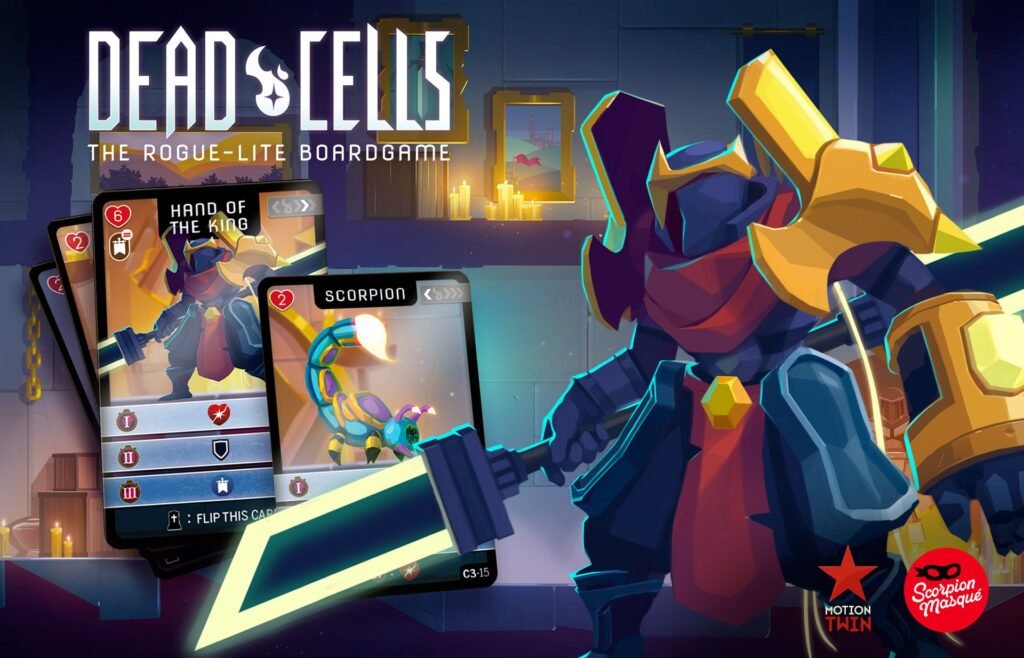
Final Thoughts
Dead Cells: The Rogue-Lite Board Game turned out to be a strong, thoughtful adaptation of the video game that brings both the thrill and challenge of a rogue-lite to the tabletop. Having played the digital version, I was curious to see how well its elements would translate, and I’m happy to say it keeps that sense of discovery, the tension in combat, and the drive to push further with each playthrough. It’s well-designed and makes for a rewarding group experience that doesn’t lose steam, even after multiple sessions.
The cooperative aspect really stands out here, and the designers did a great job of encouraging teamwork without making it easy for one player to dominate the decisions. There’s a bit of a restriction on what players can share about their combat options, which means you’re forced to communicate general strategies rather than micromanaging. I loved that aspect because it kept things collaborative and exciting without bogging us down in too much planning. The teamwork is especially satisfying when, somehow, everyone’s cards and timing align perfectly to take down a tough enemy. Of course, the flip side is just as memorable: when a perfectly good plan falls apart because the enemies got the upper hand!
I also appreciated the game’s setup for progression. Between runs, you can spend “cells” to unlock better abilities and equipment, which gave me that same “just one more run” feeling I get from the video game. And as you unlock new characters and equipment, the variety keeps increasing, so you can try different combinations and strategies in future games. The random elements like enemy draws and biome exploration keep each playthrough unpredictable, which is key for keeping things fresh. But it’s balanced enough that I never felt entirely at the mercy of the luck of the draw, and I always felt I had some control over my choices.
If you play this game with three players, you’ll probably get the best experience. It’s quick-paced, keeps everyone engaged, and lets you lean into team strategy without any awkward downtime. Four-player games felt a little less satisfying, with one player sitting out each round, which can interrupt the flow. But if you mostly play in groups of two or three, this isn’t really an issue. The solo mode also deserves a nod—it’s challenging, and while it’s a slightly different experience, it retains the thrill of exploring the biomes and making split-second combat decisions on your own.
On the downside, I’ll say the setup and teardown process can feel a bit much. It’s not a complicated game by any means, but between resetting after each run and transitioning between biomes, there’s a bit of a rhythm to get used to. Once I had the hang of it, it didn’t slow me down much, but for groups that are prone to frequent defeats early on, it might feel a bit repetitive. I’d also like to see a bit more polish in the rulebook; a few rules around player communication and combat could be clearer, especially when you’re playing with different groups and everyone interprets things differently.
Ultimately, Dead Cells: The Rogue-Lite Board Game is a win in my book. It stays true to the fast-paced, unpredictable, and challenging vibe of the video game without overcomplicating the gameplay. The characters are fun to explore, progression is rewarding, and the difficulty level is on point. It’s the kind of game that gets a little easier to manage as you go, but it never feels like a walk in the park, which is exactly what you’d want from a rogue-lite. If you enjoy cooperative games with a strong sense of progression, or if you’re just a fan of Dead Cells looking for a fun, tactical challenge with friends, this one’s definitely worth checking out.
Purchase Options

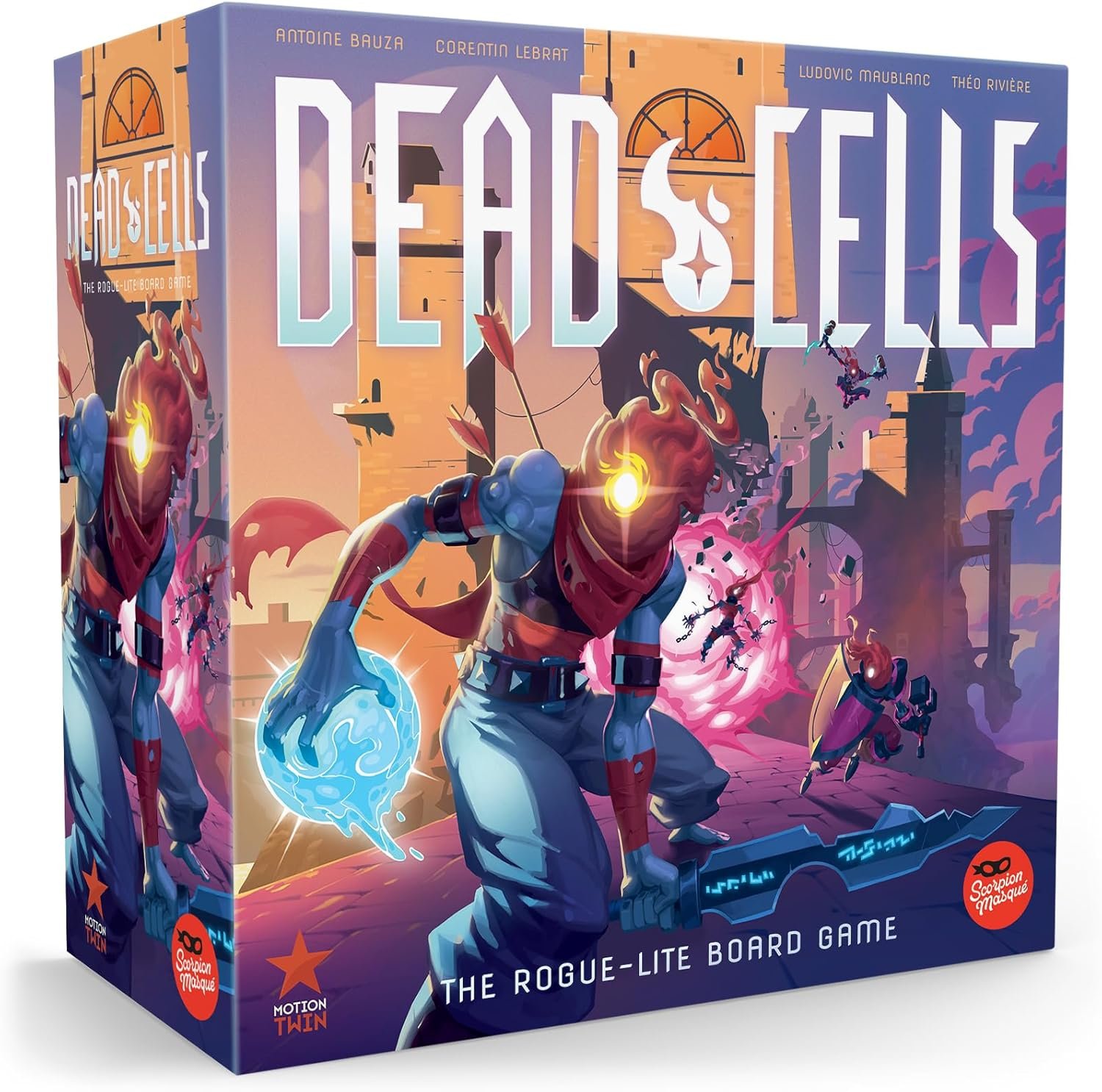
At no extra cost to you, The Board Game Site may receive revenue from affiliate and advertising partnerships for sharing this content and from purchases through links.



